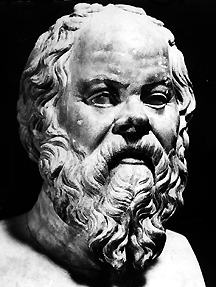Xenophon
Ecbatana
Ecbatana is the name given to the capital of the ancient Median Empire and is known today as Hamadan in Iran. It is mentioned in the Bible (Ezra 6:2 Tobit 3:7 Judith 1:1 and 2Maccabees 9:3) and by the Greek historians Xenophon and Herodotus, the latter informing us that
>” He (Deioces the Median king) built the big and strong walls, one standing inside the next in circles, which are now called Ecbatana. This fortress is so designed that each circle of walls is higher than the next outer circle by no more than the height of its battlements; to which plan the site itself, on a hill in the plain, contributes somewhat, but chiefly it was accomplished by skill. There are seven circles in all; within the innermost circle are the palace and the treasuries, and the longest wall is about the length of the wall that surrounds the city of Athens. The battlements of the first circle are white, the second black, the third circle purple, the fourth blue, and the fifth orange: thus the battlements of the five circles are painted with colours, and the battlements of the last two circles are coated, the one with silver and the other with gold.” (Hist. 1.98)<
Ecbatana is one of a number of ancient cities that various writers have suggested as the inspiration for Plato’s Atlantis. This particular association is probably based on its reported seven concentric walls of different colours. Similar claims have been made for other Persian cities, such as Susa and Firuzabad(a).
However, as archaeological excavations drew to a close in 2006 no remains of anything earlier than the Parthians (248–224 AD) had been found although the dig had reached down to virgin soil. Not a single piece of Median evidence was found.
Socrates
 Socrates was born and died in Athens (c.470-399 BC). He was responsible for the development of what became known as ‘socratic dialogues’, in which a small number of participants would engage in discussing philosophical concepts(a). Plato was responsible for expanding the use of such dialogues.
Socrates was born and died in Athens (c.470-399 BC). He was responsible for the development of what became known as ‘socratic dialogues’, in which a small number of participants would engage in discussing philosophical concepts(a). Plato was responsible for expanding the use of such dialogues.
Socrates was also one of the characters in Plato’s Atlantis dialogues, Timaeus and Critias. Although he left no writings, his ideas come to us through Plato and Xenophon.>Like his mentor Plato also had a rather negative view towards using the written word for teaching, hence his use of dialogues.<Socrates was Plato’s teacher and together with him and Aristotle, Plato’s pupil, they made up what is often referred to as the Heroic Trinity of Greek philosophy.
